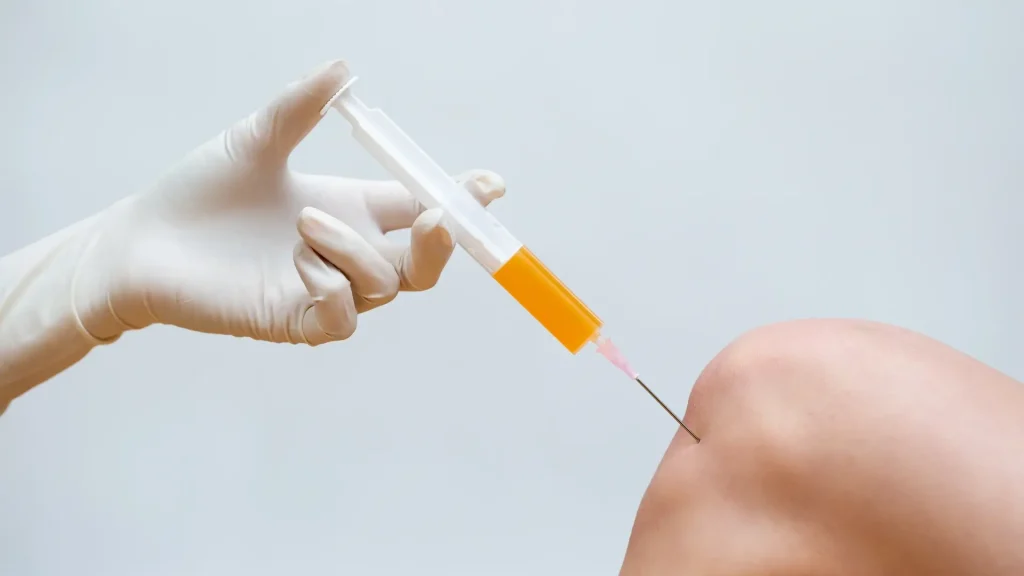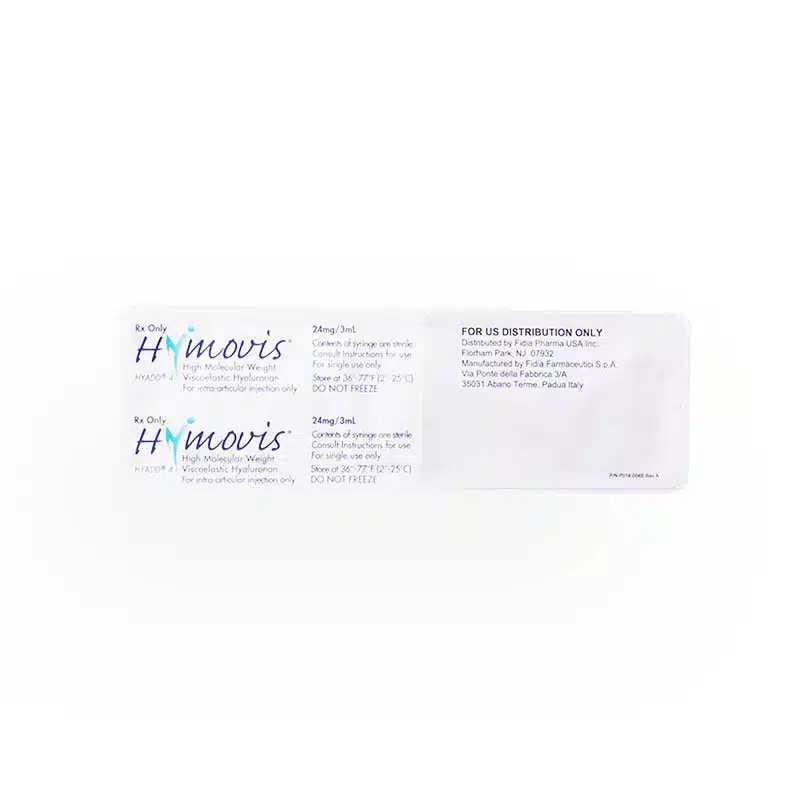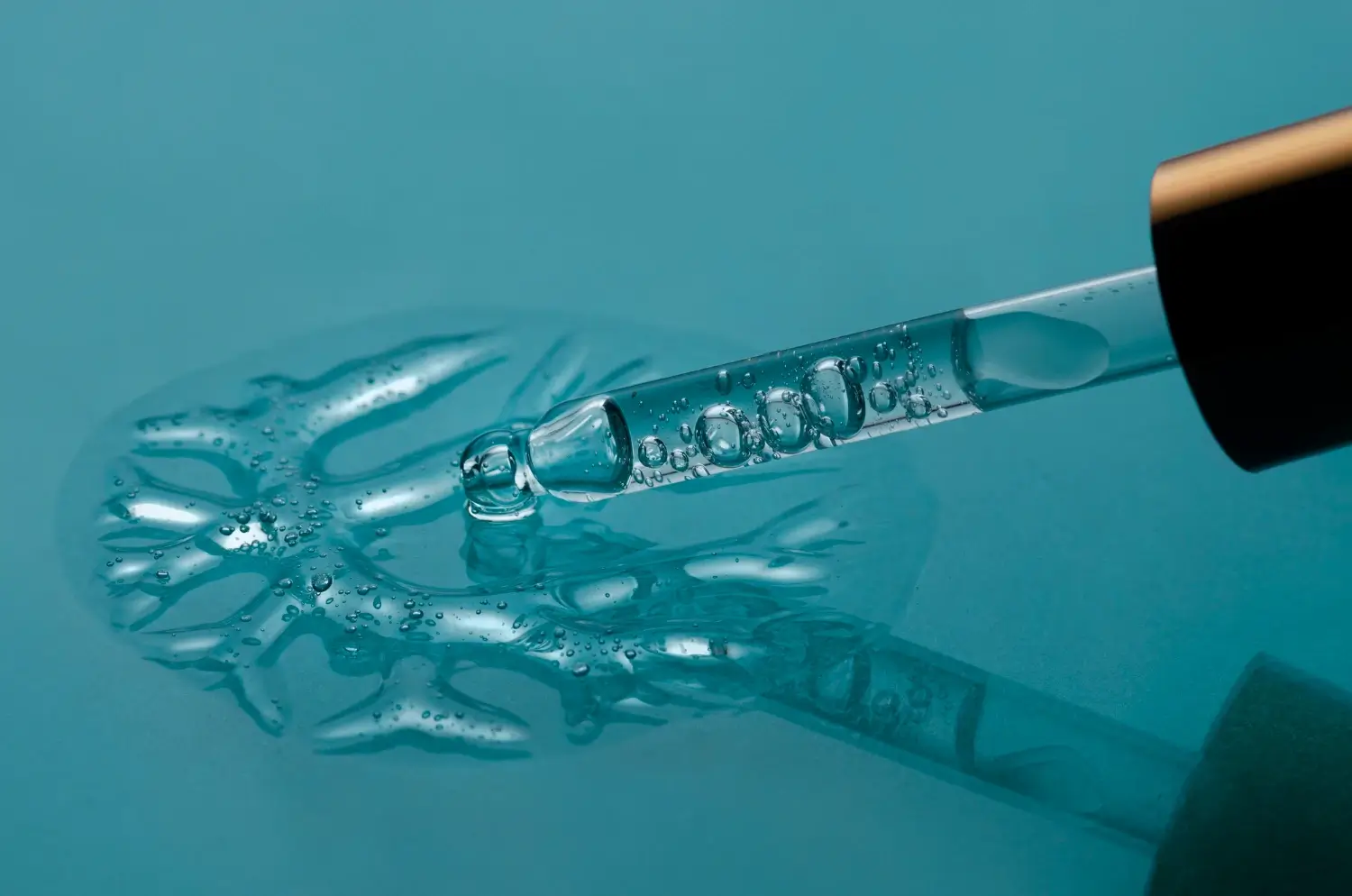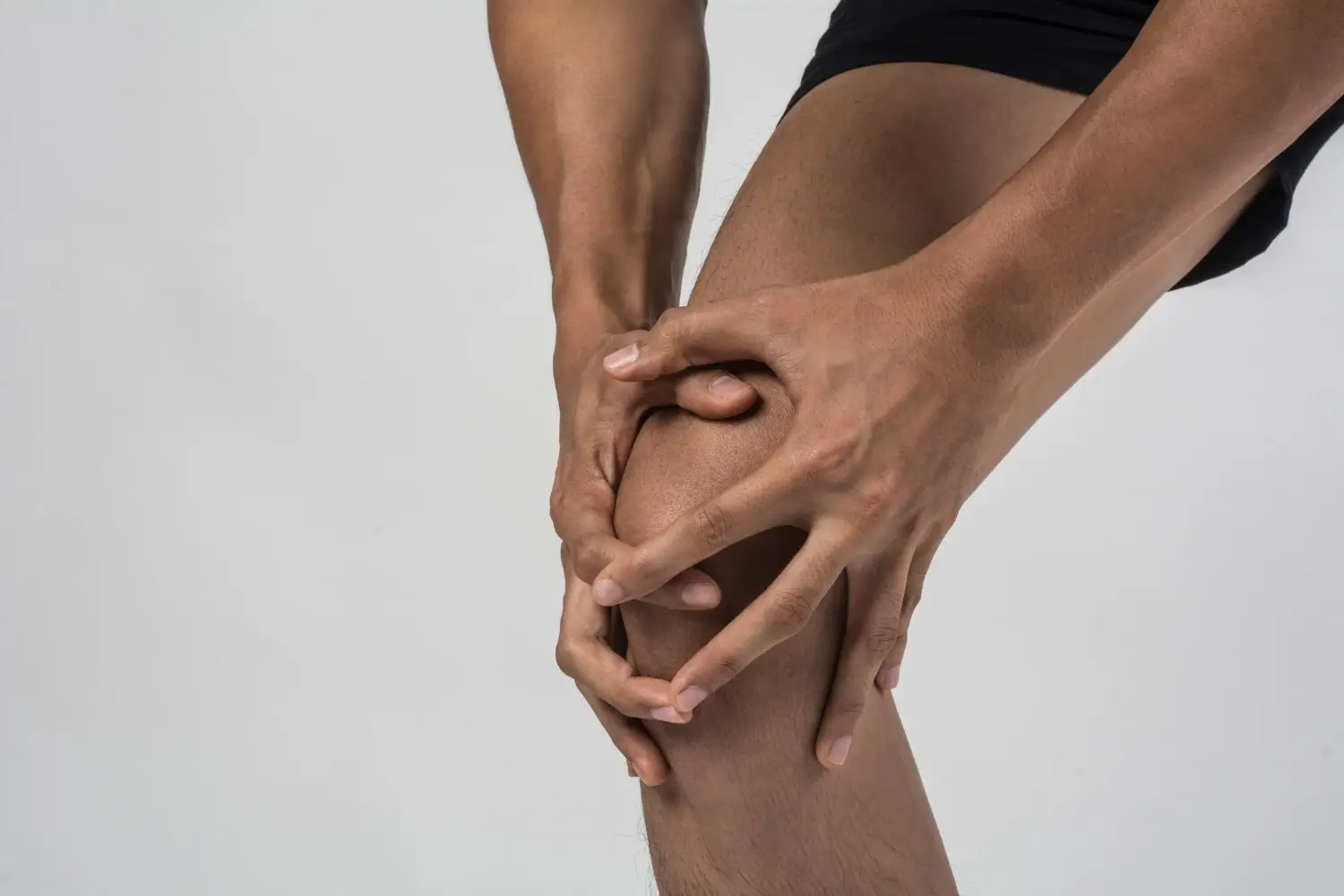Did you know that intra-articular hyaluronic acid injections for knee osteoarthritis pain are well-tolerated by most individuals? In studies, these injections have consistently outperformed placebo, proving effective for mild to moderate knee osteoarthritis.
Knee osteoarthritis (OA) often leads to joint pain, stiffness, and swelling, limiting mobility. Hyaluronic acid injections have become a popular non-surgical treatment for OA. Products such as Hymovis and Hyalgan have successfully reduced pain, improved joint function, and enhanced the quality of life for patients.
This article will evaluate Hymovis vs Hyalgan, comparing their formulations, effectiveness, patient suitability, and treatment protocols.
Key Takeaways
- Like other viscosupplement, Hymovis and Hyalgan involve injecting hyaluronic acid into the affected knee joint to improve lubrication and cushioning.
- Hymovis injection capitalizes on a new hyaluronan derivative, HYADD®4, while Hyalgan is a thick solution made from purified natural sodium hyaluronate.
- It’s worth noting that Hyalgan has a more extended history of clinical use and more extensive trial and study data than Hymovis.
- Hymovis and Hyalgan received approval from the US Food and Drug Administration to treat knee OA in patients who have not responded to physical therapy or other conservative treatments.
- A non-inferiority study showed that two injections of Hymovis effectively reduced knee osteoarthritis pain, offering results comparable to those achieved with five injections of Hyalgan.
About: Medica Depot is your trusted all-in-one supplier, offering a range of high-quality medical injectables and supplies. Buy Hymovis wholesale at Medica Depot today! Whether for health professionals, plastic surgeons, dermatologists, licensed estheticians, or other specialists, we can offer genuine, brand-name products you may need. With Medica Depot, we prioritize serving you better to improve the patient’s quality of life.
Introduction to Hymovis and Hyalgan

Osteoarthritis (OA) is a degenerative joint disease often characterized by the breakdown of cartilage. This leads to knee pain, stiffness, and reduced mobility among individuals with OA, which typically affects the knees, hips, and hands. OA often occurs in older adults and can impact their quality of life.
Despite its incurable nature, the medical field developed viscosupplements to address knee OA. Like other viscosupplement, Hymovis and Hyalgan involve injecting hyaluronic acid into the affected knee joint to improve lubrication and cushioning. These viscosupplements can manage knee OA symptoms temporarily.
Medical professionals often compare Hymovis and Hyalgan to determine which treatment can benefit each patient more. Differences in their formulation, duration of pain, injection frequency, and safety profile can influence treatment outcomes and patient preferences. A thorough comparison between these two helps providers and patients make informed decisions.
Formulation and Mechanism of Action
Hymovis injection capitalizes on a new hyaluronan derivative, HYADD®4, derived from bacterial fermentation. This viscosupplement contains high-molecular-weight viscoelastic hydrogel without chemical crosslinking but can deliver an extended effect when administered.
In contrast, Hyalgan is a thick solution made from purified natural sodium hyaluronate with a high molecular weight mixed in buffered physiological sodium chloride. It sources its high levels of HA from rooster combs and includes additional ingredients to stabilize the formulation.
When administered by a qualified and licensed medical professional, these viscosupplements can deliver symptomatic relief to knee OA patients. They have similar mechanisms of action by mimicking the HA in the synovial fluid to restore its viscoelastic properties and act as lubricants and shock absorbers for the joints. Furthermore, Hymovis and Hyalgan can offer benefits, such as:
- Improved Mobility
- Reduced Knee Pain and Inflammation
- Enhanced Quality of Life
Effectiveness and Clinical Outcomes

When comparing Hymovis vs Euflexxa or Hymovis vs Hyalgan, individuals must look into their clinical efficacy to build trust in the treatment. Medical professionals can help patients understand these clinical trials, allowing them to make informed decisions about their treatment. These studies show the safety and efficacy of both viscosupplements.
A one-year follow-up study demonstrated that Hymovis’s HYADD®4 had similar side effects to corticosteroid injections and offered better short-term symptom relief for mild to moderate knee osteoarthritis, though long-term efficiency requires further studies. Patients with lower baseline pain and dysfunction might benefit most from Hymovis injections.
According to Hyalgan, more than 100 clinical trials worldwide have examined Hyalgan’s effectiveness. One study found that this viscosupplement significantly reduced pain over a 26-week period and maintained this effect for six months. Additionally, research on repeated Hyalgan treatments shows pain relief lasting over 30 months.
While both viscosupplement showed their safety and efficacy in delivering symptomatic relief, patients must seek medical advice to equip themselves with comprehensive information about the treatments. However, Hyalgan has a more extended history of clinical use and more extensive trial and study data.
Suitability for Different Patients
It’s worth noting that Hymovis and Hyalgan received approval from the US Food and Drug Administration to treat knee OA in patients who have not responded to physical therapy or other conservative treatments. In addition to this indication, individuals and medical practitioners should avoid Hymovis and Hyalgan’s contraindications.
- Hymovis Contraindications: Patients with known hypersensitivity to hyaluronate preparations and gram-positive bacterial proteins, and those with infections or skin diseases in the area of the injection site or joint.
- Hyalgan Contraindications: Individuals with known allergy to hyaluronate preparations and those with cases of present infections or skin disease in the treatment area.
These contraindications can help medical professionals determine which viscosupplement can address the patient’s knee osteoarthritis (OA) concerns and specific individual needs. Considering these factors can ensure patient suitability and safety for knee OA relief.
Administration Techniques

A non-inferiority study showed that two injections of Hymovis effectively reduced knee osteoarthritis pain, offering results comparable to those achieved with five injections of Hyalgan. Hymovis, with its unique hydrogel formulation, provides a two-injection regimen, given a week apart. Hyalgan typically requires a series of five injections, which is more suitable for patients needing more treatments.
Like other viscosupplements, Hymovis and Hyalgan require a medical professional to inject them intra-articularly directly into the affected knee joint. However, they differ in their injection frequency and dosage.
- Hymovis Treatment: This viscosupplement requires a 3 mL dose for each knee and two visits to the medical provider to achieve optimal results. The provider should use an 18 – 20 gauge needle when injecting Hymovis.
- Hyalgan Treatment: A treatment cycle requires five weekly injections into the affected joint, totaling 2 mL for each knee. Medical professionals should utilize a 20-gauge needle for impressive outcomes.
Additionally, medical practitioners may offer personalized post-treatment care tips for patients to ensure a safe and smooth recovery after injection sessions. These are the most common tips that providers may instruct patients to avoid further complications.
- Avoid heavy activities for 48 hours post-injection
- Properly rest the knee after injections
- Maintain a healthy lifestyle
- Stay adequately hydrated
The decision is based on individual patient factors, such as the severity of the symptoms, how the patient has responded to past treatments, and any allergies the patient might have. Although the administration techniques for Hymovis and Hyalgan seem similar, patients must consider their injection frequency differences.
Conclusion
When comparing Hymovis vs Hyalgan, it’s essential to recognize their unique formulations, clinical effectiveness, and treatment protocols. Both viscosupplements target knee osteoarthritis symptoms through hyaluronic acid injections, offering distinct advantages for personalized care based on patient needs.
Their FDA approvals and proven clinical outcomes reinforce their safety and efficacy. However, determining the best treatment option requires guidance from a healthcare provider. The decision between Hymovis and Hyalgan should be made after evaluating the patient’s specific condition, treatment goals, and overall medical history, ensuring the most suitable and effective outcome.
FAQs
1. What are the key differences between Hymovis and Hyalgan?
Hymovis injection capitalizes on a new hyaluronan derivative, HYADD®4, while Hyalgan is a thick solution made from purified natural sodium hyaluronate. Hyalgan has a longer history of clinical use and more extensive trial and study data than Hymovis.
2. What are the effectiveness and clinical outcomes of Hymovis and Hyalgan?
Hymovis’s HYADD®4 had similar side effects to corticosteroid injections and offered better short-term symptom relief for mild to moderate knee osteoarthritis. On the other hand, Hyalgan significantly reduced pain over 26 weeks and maintained this effect for six months.
3. Who are the suitable candidates for Hymovis and Hyalgan treatments?
Patients who have not responded to physical therapy or other conservative treatments can consider Hymovis and Hyalgan. Additionally, patients with lower baseline pain and dysfunction might benefit most from Hymovis injections.
References
- Bhandari, M., Bannuru, R. R., Babins, E. M., Martel-Pelletier, J., Khan, M., Raynauld, J. P., Frankovich, R., Mcleod, D., Devji, T., Phillips, M., Schemitsch, E. H., & Pelletier, J. P. (2017). Intra-articular hyaluronic acid in the treatment of knee osteoarthritis: a Canadian evidence-based perspective. Therapeutic advances in musculoskeletal disease, 9(9), 231–246. https://doi.org/10.1177/1759720X17729641
- Bisicchia, S., Bernardi, G., & Tudisco, C. (2016). HYADD 4 versus methylprednisolone acetate in symptomatic knee osteoarthritis: a single-center single-blind prospective randomised controlled clinical study with 1-year follow-up. Clinical and experimental rheumatology, 34(5), 857–863.










